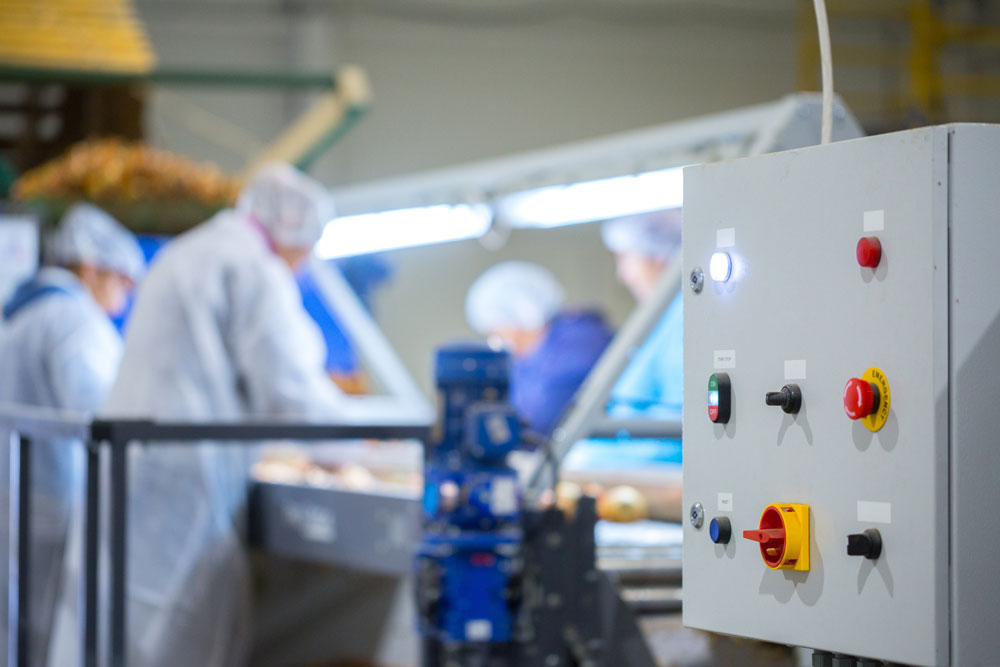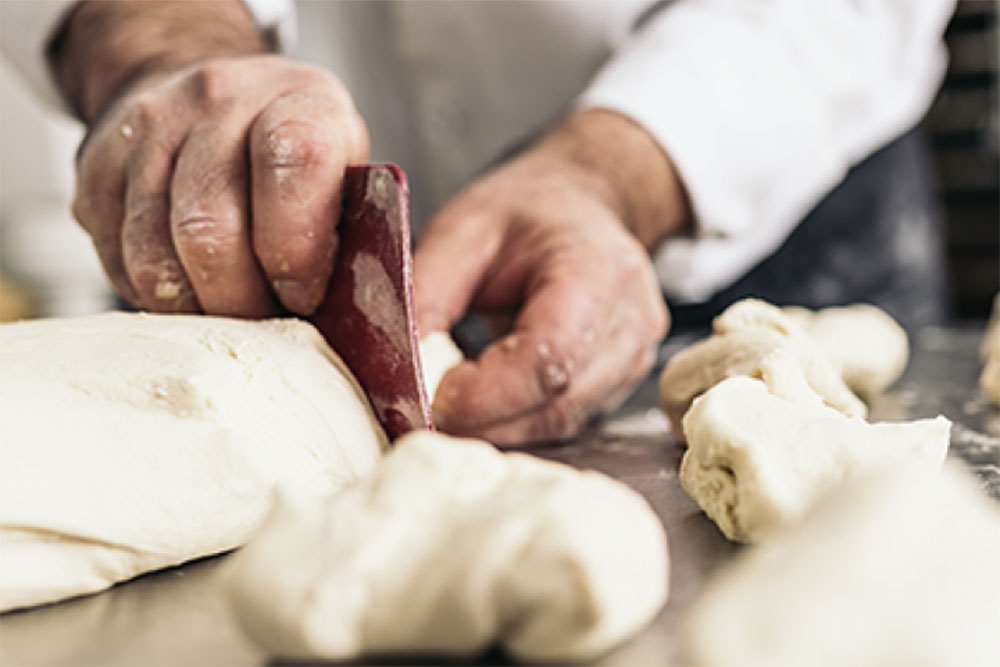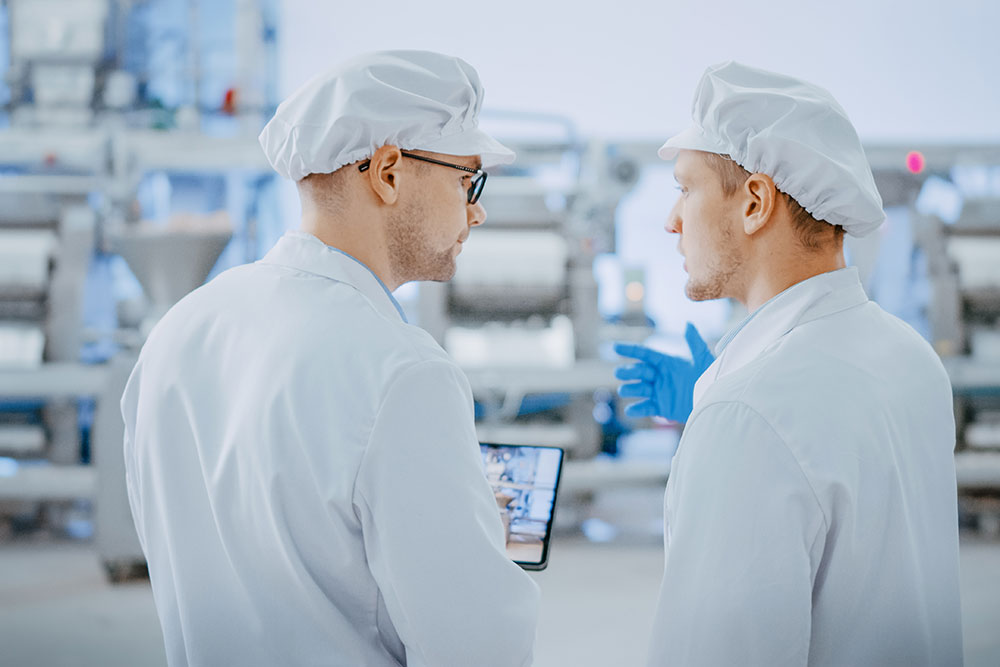Many major food processors throughout North America have suffered a listeria outbreak over the last few decades. They have resulted in illnesses, deaths, recalls, losses for processors and producers, and damaged reputations.
Here’s what you need to know and some tips to help protect your food processing facility.
WHAT IS LISTERIA?
Listeria isn’t just one bacterium, but a genus of bacteria, of which there are at least 20 different species. The main pathogen that affects humans is called L. monocytogenes, which causes listeriosis when ingested.
Listeria is generally found in contaminated foods, and its ability to grow and reproduce within its host’s cells is what makes it particularly dangerous, especially to at-risk populations (the elderly, infants, pregnant women, those with pre-existing conditions).
WHAT ARE THE SYMPTOMS OF LISTERIOSIS?
The effects of listeriosis can differ wildly depending on who is infected. In extreme cases, it can cause sepsis (tissue damage), meningitis, and encephalitis (swelling of the brain). All of these conditions can result in lifelong damage or even death if left untreated. Mild symptoms include gastroenteritis and fever.
Most people diagnosed with listeriosis already have an invasive infection that may take up to two months to present itself. Early signs include diarrhea, fever, muscle aches, and other gastrointestinal symptoms.
WHO IS MOST AT RISK FOR LISTERIOSIS?
Anyone can contract a listeriosis infection, but it can severely impact the health of fetuses, newborns, the elderly, and pregnant women. In pregnant women, listeriosis is often relatively mild, but can cause premature birth and stillbirth, while it can cause encephalitis and other serious conditions in newborns.
In the elderly and immunocompromised, listeriosis can cause organ failure due to sepsis, as well as meningitis and permanent brain damage.
WHICH FOODS MOST OFTEN CONTAIN LISTERIA?
Most cases of foodborne listeria are found in animal products, which most people would associate with foodborne illnesses anyway. If your facility produces or plans on producing any of the following foods, you have to remain extra vigilant with all of your cleaning and hygiene procedures, from handwashing to your drainage.
Here are the foods that are most at risk of listeria infection:
- Unpasteurized (raw) milk and dairy products
- Soft cheeses made with unpasteurized milk (queso fresco, brie, feta, camembert)
- Ready-to-eat deli meats
- Refrigerated pâtés and meat spreads
- Refrigerated smoked seafood
- Raw fruits and vegetables
HOW CAN I PROTECT MY FACILITY AGAINST LISTERIA?
While bacteria may be microscopic and seemingly unavoidable, there’s actually a lot you can do to help prevent the growth of listeria in your food production operation. Here are a few of them.
CLEANING PROCEDURES AND PROPER HYGIENE
Rule number one of preventing a listeria infestation is proper hygiene practices, no matter what type of food processing facility you operate. Hand wash stations should meet regulations in both number and supplies, including soaps, paper towel, and hand sanitizer.
Employees should be educated on proper handwashing technique (some soap and a quick rinse won’t do!), even where gloves are required. Disposable latex and polyurethane gloves provide a nice, warm environment for bacteria to grow, so washing hands before and after wearing gloves is ideal.
Uniforms, aprons, footwear, and other apparel must also be free of debris and other possible contaminants. Proper personal hygiene is vital to preventing listeria and just about every other pathogen from contaminating the foods and food products that your consumers rely on.
Training should extend to sanitizing and cleaning procedures as well. Responsibilities should be made clear and all staff members should make it their mission to prevent food contamination by any means possible.
MAKE YOUR FOOD PRODUCTION ENVIRONMENT LESS BACTERIA-FRIENDLY
The materials you use to construct your food production facility can actually have a drastic impact on how easy it is for bacteria to harbor and grow. First and foremost, avoid wood products of any kind. The thousands of grooves, as well as wood’s absorbent tendencies, make for a perfect breeding ground for bacteria.
Second, use bacteria-resistant epoxy coatings on your walls and ceilings to create surfaces where bacteria simply can’t grow. And, of course, constantly clean and sanitize all work surfaces, as well as your floors, using antibacterial products.
CHOOSE THE RIGHT KIND OF DRAINAGE
Your food processing facility’s drainage system is one of the largest breeding grounds for listeria, and if left unchecked, can turn into a nightmare not only for listeria build-up, but for inspections as well.
Talk to an expert who can look at your entire facility and assess your drainage needs based on use, contamination risks, and food-safe requirements. If feasible, your best option for food-sade drainage is a slot drain system, which is specially made to be bacteria-, corrosion-, and temperature-resistant.
FoodSafe slot drains are made from hygienic stainless steel and feature a “no-niche” design, which means there aren’t any corners or spaces in any part of the drain where bacteria or standing water can sit and fester.
Our slot drains also come pre-sloped to ensure wastewater can constantly flow in the opposite direction of your product process. They’re also incredibly easy to clean using our custom brush and paddles tools, as well as our clean-in-place (CIP) feature, Flush-Flo, which allows you to connect a water line for manual or automatic flushing of the system.
It’s important to treat your drainage like you would any other piece of equipment in your facility, because a clean drain system is one of your best friends in helping to prevent build-up of and possible contamination by listeria.
Questions?
Contact a FoodSafe Drains expert today to learn more about how your drain system can drastically impact the cleanliness of your food production or food processing facility.
A clean facility not only means less risk of listeria growth, but means fewer pests, other pathogens, and failed inspections as well.


